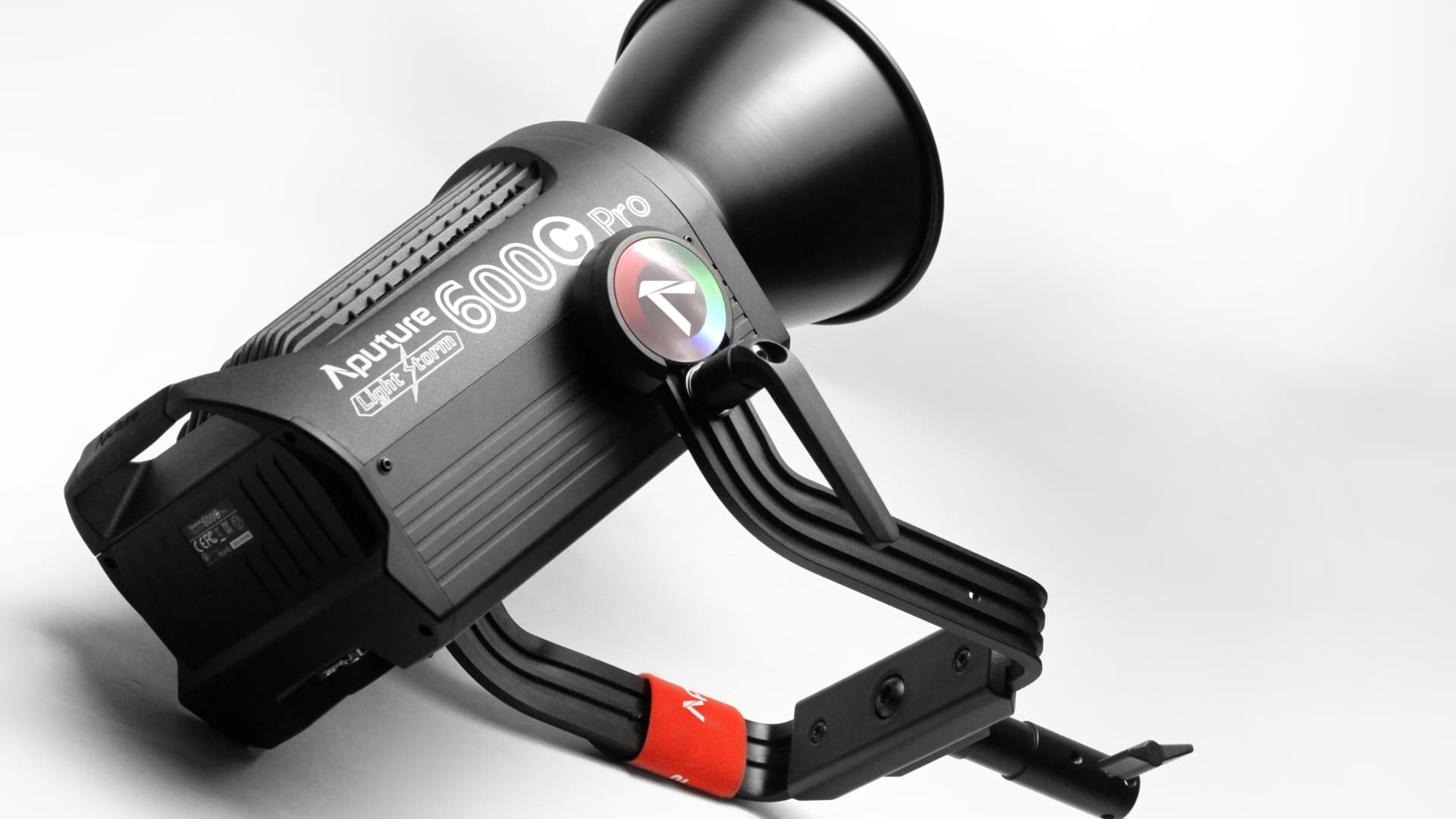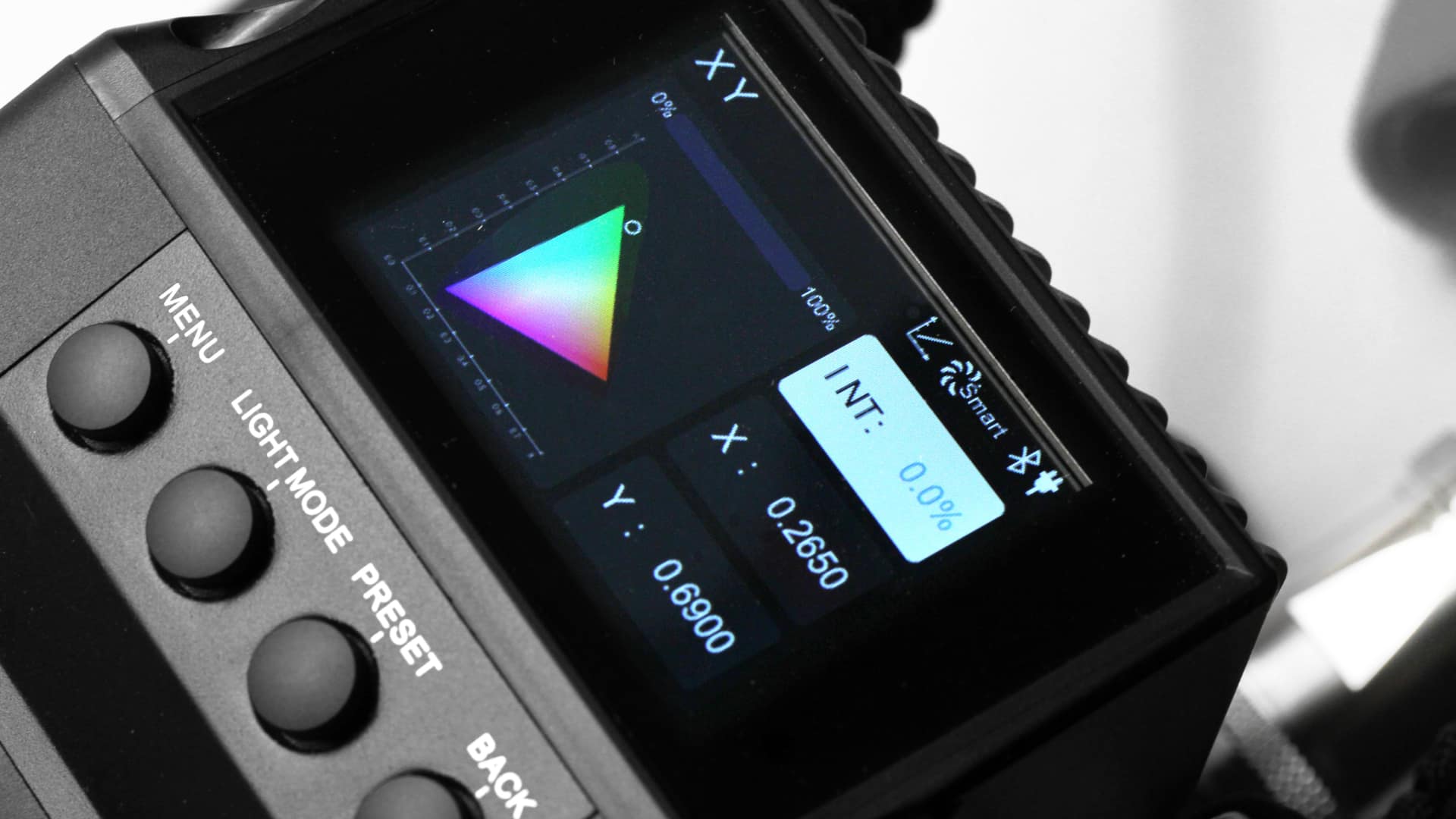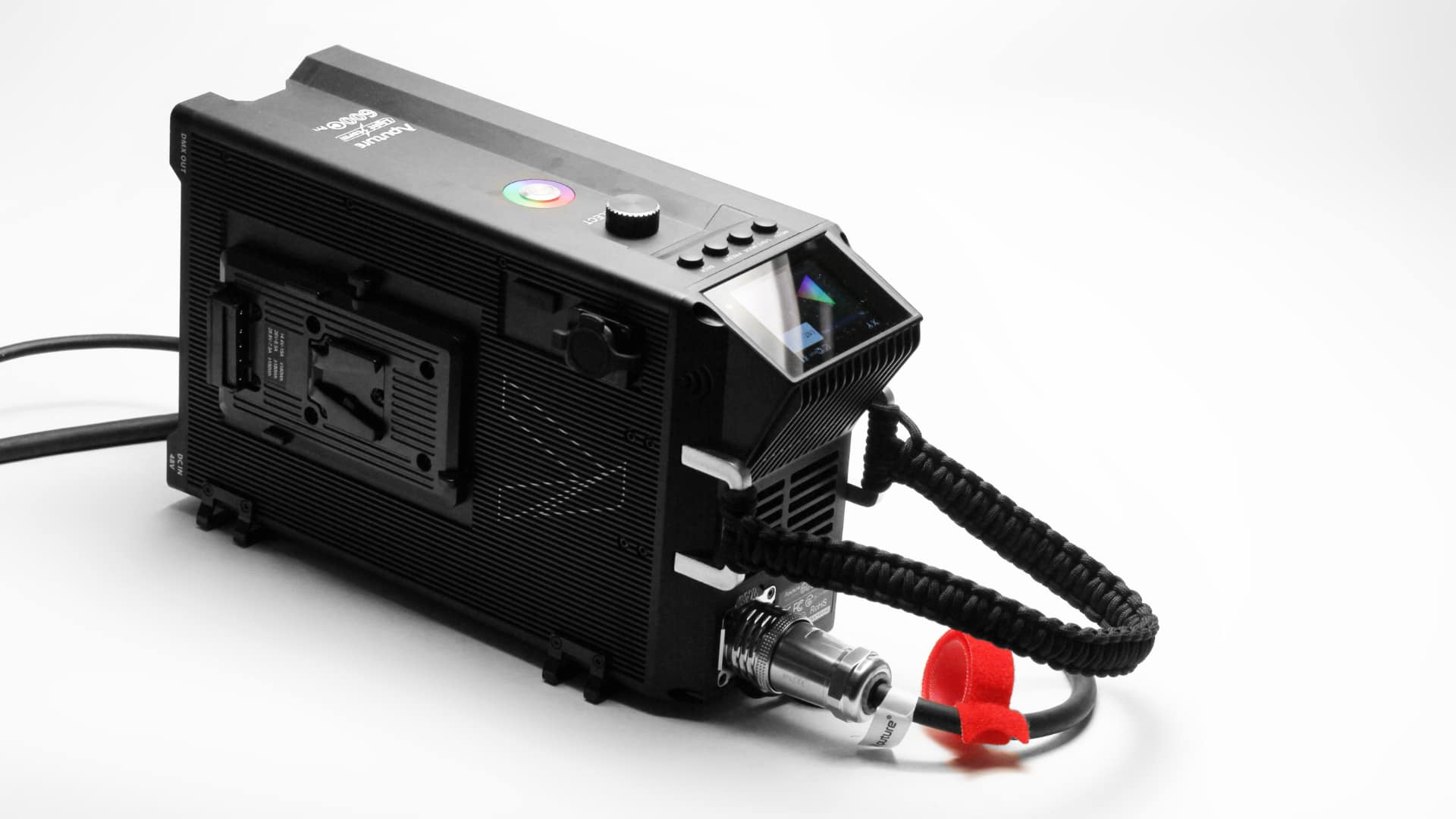
Aputure’s much-anticipated LS 600C Pro eaters a crowded market of clever lights and more than holds its own.
Aputure’s much-anticipated LS 600C Pro is a light designed to answer a lot of questions. It’s big, it’s bright, the company has add-ons for everything from a collimated beam to a softbox, and then there’s the main event. On one hand, progress has spoiled us. On the other, well, going from 150 to 300 to 600 is not just growth, it’s exponential growth, and it’ll be interesting to see if this new light gives anything away in return for all that flexibility and power.
The 600C is about the same size and only slightly heavier than the daylight-only 600D, and thus chunky compared to an HMI of similar power level. The 600C kit in its rolling case pushes thirty kilos. An ARRI D5 kit is under half that, and they’re usually shipped with a 1200W-capable ballast. The 600C packs in five channels of LEDs to achieve its colour mixing, so it’s probably not doing bad, though lighter is always nice.
The output aperture is a prismatic diffuser presumably designed to ensure proper bundling of light from different-coloured emitters, and it forms an emitting area rather larger than the COB in a 600D. We might expect that to marginally decrease the optical efficiency of collimating accessories such as the high-gain multifaceted reflector, as well as the spotlight and Fresnel adaptors, though probably not by much.
Those predictions are largely borne out by the company’s numbers, which show the 600D achieving 2600lx at 3m without its reflector and the 600C 1900lx. With the reflector in place, the 600D achieves 8500lx and the 600C 5020lx. These numbers agree with experimental results and the reflector does appear to have somewhat lower gain, perhaps due to the larger source.
On test

CIE xy colour selection is a welcome development
Switching on (and suppressing an almost involuntary yelp of my eyes) we don our welder’s mask and get to testing. The 600C achieves its nameplate rating, pulling almost 700W from the wall for full power white. Selecting bright primary colours reduces consumption to a couple of hundred watts. It will, shockingly, achieve full output on battery power, although that’ll demand up to 10A from two of the recently-introduced 26V batteries. It will achieve half power on conventional-voltage batteries, although they’ll still need to be capable of handling 15 amps, which many won’t.
So, yes, you can run 600W LED lights from batteries, but a battery system capable of running the 600C continuously at full power is worth as much as the light. There is a 48V DC input which demands 15A, close to the limit of even the best 3-pin XLRs. If you can find a cable big enough, four big lead-acid wet cell batteries in series would do it. If there’s one layout issue it’s that the output is on what feels like the top of the controller, whereas much of the other connectivity is on the bottom. Unless it’s hung on a stand or operating on battery power, it can’t sit on its base, which is an odd choice. It feels like we’re required to lay it down on one side all the time
The 600C enters a market crowded with clever lights, and keeps up handily. There’s CRMX, Bluetooth and Ethernet connectivity, as well as the company’s own Sidus Link app, which is by far the easiest approach. By app or on the front panel, users can select colours by CIE xy coordinate. Measuring all of the Rec. 709 primaries with a UPRTek CV600 meter, we discover that the red is within 0.02x and 0.015y of ideal, and green is even closer with an error of less than 0.005x and 0.15y. There’s occasionally a tiny mismatch between what the front panel will let us do and what the app provides; in one test the panel controls wouldn’t quite permit a Rec. 709 blue to be selected, though that’s always possible in the app and results were just as close as the other primaries.
Tests for white light quality were made at 100%, 50% and 5% at seven CCTs between 2300K and 10,000K. TLCI is never below 89.8 at 2300K and 5% output, which is way out on the extremes. At or above 2800K, TLCI always exceeds 95.5. Colour quality is therefore very good, although the star of the show is CCT accuracy. Error is no more than 450K at 10,000K, a mired shift barely worth calculating. At or below 5600K, CCT errors are often barely into double digits. This is exceptional and almost certainly involves some good luck with experimental errors cancelling each other out. Either way, the Aputure LS 600C Pro appears to have very accurate CCT matching other than a microscopic minus-green error around 3200K.
Great as all this is, there’s no guarantee that any two colour mixing LEDs will match on camera, no matter how good the numbers look. More or less all designs use different LED emitters and firmware, and that means that two different lights set to identical xy coordinates might each validly create a very different spectrum, which a camera may see. There is no immediate prospect of a solution to this, although Aputure has suggested that its recent releases are designed to match each other. One other note on colour is that there is mention of a maximum frame rate, which suggests there’s some pulse-width modulation going on, so Phantom enthusiasts might want to test carefully.
Prices and comparisons

Input on the bottom, output on the top. There are feet on the side so it will sit like this…
The 600C, ex tax, lists at just over £2000 in the UK and $2500 in the USA. That’s 25% more than the bicolour 600X, but also less than half the price of the dimmer, less flexible (if lighter) ARRI D5 with its ballast; truly, the sun has set on HMI at this level. It’s impossible to discuss any of this without mentioning Prolycht’s upcoming contender, which emerged at NAB, though the Orion 675 will be spendier. The 600C is also less than half the price of an Orbiter, which makes ARRI’s effort look extremely expensive no matter how clever the colour engine is. Aputure call the 600C weather resistant, while Orbiter is apparently weather proof, but there are few other objections to raise.
If this is the sort of thing Aputure had in mind for its higher-end range when it separated the Amaran brand, then it makes sense. It’s big and powerful, and it trades off less than a stop in output, compared to the fixed-colour option, in exchange for its capability. There have long been 800-watt HMIs, but if the exponential growth is to continue, perhaps we’ll see something over a kilowatt next, which should be suitably entertaining.
Tags: Production


Comments